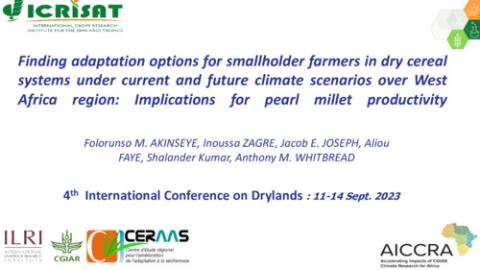Abstract
Climate risk adaptation strategies including cultivar, planting windows, and fertilization for pearl millet production in rainfed farming systems in Nigeria and Senegal were investigated. The result of the APSIM-millet module was calibrated and validated using farm-level yield data from experimental trials conducted under farmers’ participatory production technology in contrasting environments. Future climate change impacts were estimated using five ensembles of bias-corrected climate model projection outputs under the RCP8.5 high-emissions scenario at the mid-century period, 2040-2069 against the baseline (1980-2009). The results showed that farmers' sowing window simulated slightly higher grain yield than the agronomic sowing window for improved local millet cultivar indicating yield increased by 8-12%. However, the projected changes in the mid-century (2040-2069) resulted in a decline in yield against baseline climate for both varieties and sowing windows, indicating the negative impact of CC on yield productivity. Low magnitude change on dual-purpose millet compared to improved local millet suggests promotion of improved millet variety and early sowing could serve as an excellent strategy to minimize risk or losses under CC. Similarly, low magnitude impacts simulated on grain yield in Nigeria compared to Senegal despite the similarity in agroecology could be associated with inherent soil fertility such as organic carbon than additional inputs applied.

